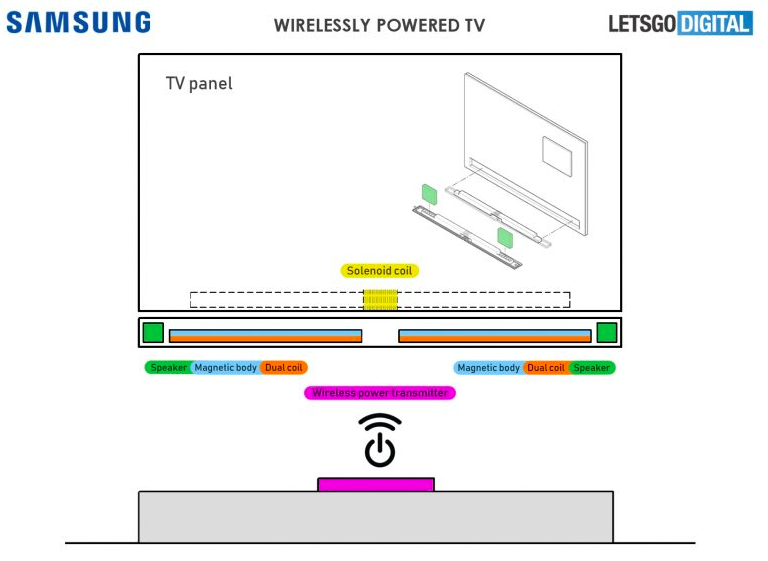Samsung is one of the most prolific manufacturers of TVs around these days, and its newest designs promise a whole new level of stunning design and picture quality. Think the new 8K TVs that Samsung added to its lineup this year, as well as its Frame TVs that can be hung on the wall and display a beautiful piece of art whenever the TV is not in use as such. That’s one of a few different examples we could point to of Samsung trying to think of the TV as something other than a bland, utilitarian box.
And the South Korea-based consumer electronics giant may still have lots more up its sleeve for us in this regard. We know, for example, about the release of its one-cable TV, which uses a transparent cable to connect to the power supply as well as any peripherals. But when you’ve got one cable, the natural next step is to move forward with a cable-free TV, which appears to be what Samsung has in mind based on a newly discovered patent filing.
According to Dutch tech blog LetsGoDigital, Samsung Electronics actually filed a patent that depicts this idea with the World Intellectual Property Office. Specifically, it envisions a wireless power transceiver and display.
The patent was just published a few days ago, on February 28. As LetsGoDigital notes about it, one idea for powering a TV wirelessly might be to use a wide coil. However, the tendency to make TV sets increasingly thinner means there’s no room inside to house such a coil. Samsung’s solution, according to this new patent, is a bar that’s mounted horizontally behind the television. The wireless power receiver would be connected to the separate box which looks like a sound bar and incorporates the wireless power transmitter.
Here’s a diagram of what the setup is envisioned to look like:

As always, it’s worth offering the usual reminder associated with patent coverage that the filing doesn’t necessarily mean Samsung has formal plans to do anything with this yet or to ever commercialize it. Still, it would no doubt be welcomed by some consumers who don’t want unsightly cables and tangles of wires running from their TVs throughout their home. And it’s definitely interesting to see Samsung keep trying to think about new ways to push the bounds of what it can offer consumers through its TV set design and manufacturing process.








